The rhythmic pulse of a traditional drum circle echoes through time, carrying stories and wisdom that have sustained Indigenous communities for countless generations. From the haunting melodies of wooden flutes to the soul-stirring vocals of throat singing, traditional Indigenous music serves as both a spiritual compass and a living bridge between past and present. In Ontario’s sacred spaces and cultural gathering places, these ancient sounds continue to resonate, offering visitors a profound connection to the land and its original stewards. Unlike modern musical forms, Indigenous music transcends mere entertainment – it’s an intricate tapestry of ceremony, celebration, healing, and teaching, deeply woven into the fabric of daily life. Whether experienced during a pow wow’s grand entry or in the intimate setting of a traditional teaching lodge, these authentic musical expressions invite listeners to step into a world where every beat carries meaning and every song tells a story of resilience, respect, and profound connection to the natural world.
The Sacred Connection: Music and Nature in Indigenous Traditions
Songs of the Land
The diverse landscapes of Ontario have profoundly shaped indigenous oral traditions and musical expressions for countless generations. Along the shores of the Great Lakes, you’ll hear songs that mirror the rhythmic lapping of waves, while the dense forests of the Canadian Shield inspire deeper, more resonant drumming patterns that echo through the trees. In the wetlands, songs often mimic the calls of waterfowl and the gentle rustling of cattails in the wind.
These natural soundscapes have given birth to region-specific instruments too. Cedar flutes capture the whispers of wind through pine forests, while water drums reflect the sounds of rainfall and streams. In northern communities, songs often incorporate the haunting calls of loons and wolves, while southern traditions feature more birdsong-inspired melodies.
What makes these musical traditions so special is how they connect people to specific places. Each valley, river, and forest has its own unique song, helping to preserve not just the music but also the deep connection between the land and its first peoples.
Seasonal Celebrations
Indigenous music plays a vital role in marking nature’s rhythms and the changing of seasons across Ontario. Through seasonal indigenous ceremonies, traditional songs and drum rhythms celebrate key moments like the first spring maple sap, summer solstice, fall harvest, and winter’s arrival. Each season brings its own unique musical traditions, with specific instruments and vocal techniques chosen to honor the natural world’s transitions.
Spring welcomes renewal with gentle flute melodies mimicking birdsong, while summer celebrations feature energetic drum circles and community singing. Fall harvest ceremonies incorporate rattles made from dried gourds, creating sounds that echo the rustling leaves. Winter ceremonies often feature deeper drum beats and contemplative songs that reflect the quieter energy of the season.
These musical traditions continue to thrive today, with many communities welcoming respectful visitors to experience these celebrations firsthand. The songs carry ancient wisdom about living in harmony with the land, making them not just beautiful performances but vital teachings about environmental stewardship and seasonal living.
Pro tip: When attending these ceremonies, listen for how the music mimics natural sounds – from rainfall to wind through trees – connecting participants to the changing rhythms of the Ontario wilderness.
Traditional Instruments of Ontario’s Indigenous Peoples
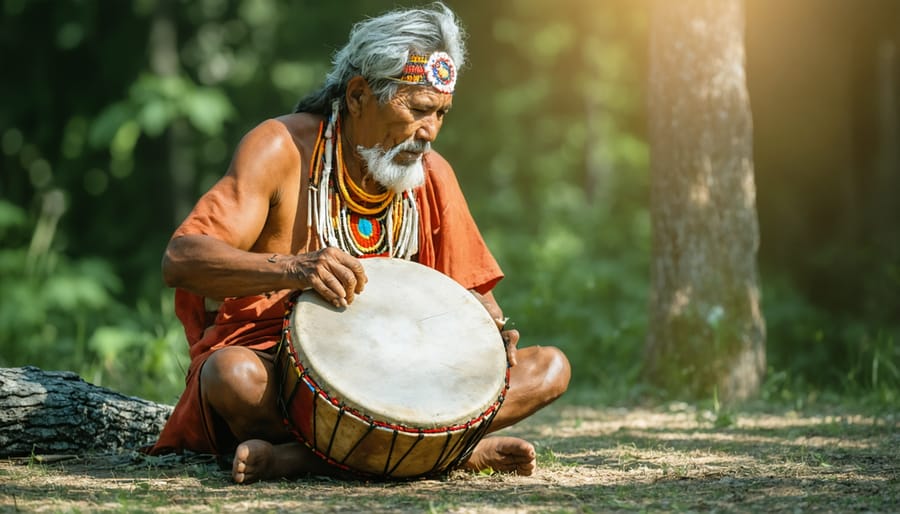
The Sacred Drum
At the heart of indigenous music lies the sacred drum, often called the heartbeat of Mother Earth. Throughout Ontario’s First Nations communities, different drum types serve unique ceremonial and cultural purposes. The big drum, or pow wow drum, stands as the centerpiece of community gatherings, requiring several drummers to sit around it in unity, creating powerful rhythms that echo through the forests and across the lakes.
Hand drums, smaller and more personal, feature prominently in healing ceremonies and individual expression. Made traditionally from deer, moose, or elk hide stretched over wooden frames, each drum carries its own story and spirit. Many indigenous elders teach that the drum’s vibrations connect us directly to the earth’s natural rhythms.
In many communities, water drums hold special significance. These unique instruments, partially filled with water, produce distinctive sounds that mimic rainfall and flowing streams. The varying water levels create different tones, allowing drummers to express everything from gentle spring showers to powerful thunderstorms.
The drum-making process itself is deeply spiritual, with each step accompanied by specific prayers and ceremonies. Many indigenous craftspeople still follow traditional methods, selecting materials based on the season and moon cycle, ensuring each drum carries forward ancestral knowledge and power.
When visiting cultural centers or attending pow wows across Ontario, you’ll often hear these drums speaking their ancient languages, telling stories that have echoed through generations.
Rattles and Flutes
Among the most captivating traditional instruments you’ll hear at indigenous gatherings are rattles and flutes, each carrying deep cultural significance. Rattles, often crafted from gourds or hide-wrapped vessels filled with small stones or seeds, create rhythmic sounds that ground ceremonial songs and dances. Listen closely, and you’ll notice how the steady shake of these rattles mimics the natural rhythms of rainfall or rustling leaves.
Traditional flutes, typically carved from cedar or other sacred woods, produce hauntingly beautiful melodies that often imitate bird songs and wind whistling through trees. Each flute is unique, with its own voice and character, shaped by both the craftsperson’s skill and the natural properties of the wood. During your visits to Ontario’s cultural centers, you might see both single and double flutes, each producing distinctly different tones.
What makes these instruments particularly special is their connection to the natural world. Many are decorated with symbols representing animals, plants, or celestial bodies, telling stories through both sound and sight. At traditional gatherings, you’ll often see these instruments used together, with rattles providing the heartbeat of the earth while flutes soar above like eagles in flight.
Remember to show respect when these sacred instruments are being played – photography may not always be permitted during ceremonial performances, so it’s best to ask beforehand.
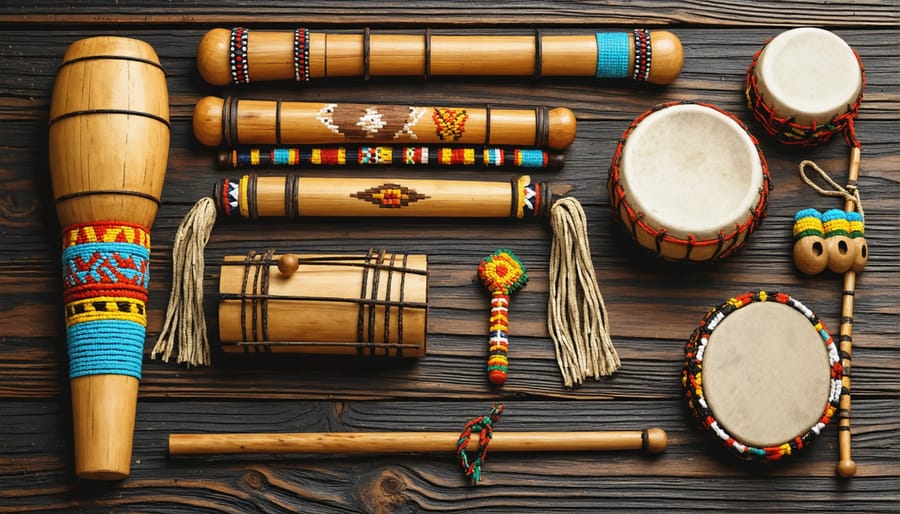
Where to Experience Indigenous Music Today
Provincial Parks and Cultural Centers
Ontario’s parks and cultural centers offer incredible opportunities to experience authentic Indigenous music in its traditional context. At Petroglyphs Provincial Park near Peterborough, visitors can attend seasonal drum circles and singing performances against the backdrop of ancient rock carvings. The park’s Learning Place features regular workshops where you can learn about traditional instruments and their spiritual significance.
The Ojibwe Cultural Foundation on Manitoulin Island hosts weekly music sessions where local elders share songs and stories. During summer months, you can join evening gatherings around the sacred fire to hear traditional songs and learn about their connection to the land.
In Midland, the Huronia Museum and Ouendat Village regularly features performances by Indigenous musicians, while the nearby Sainte-Marie among the Hurons hosts special events where visitors can experience both historical and contemporary Indigenous music traditions.
For an immersive experience, head to Fort William Historical Park in Thunder Bay, where seasonal pow wows bring together drummers and singers from across Ontario. The site’s Indigenous interpreters demonstrate traditional instruments and explain their role in ceremonies and daily life.
Pro tip: Many of these venues offer special programming during National Indigenous Peoples Day (June 21) and throughout National Indigenous History Month, making it an ideal time to plan your visit. Remember to check each location’s schedule in advance, as many musical performances follow seasonal patterns and may require advance booking.
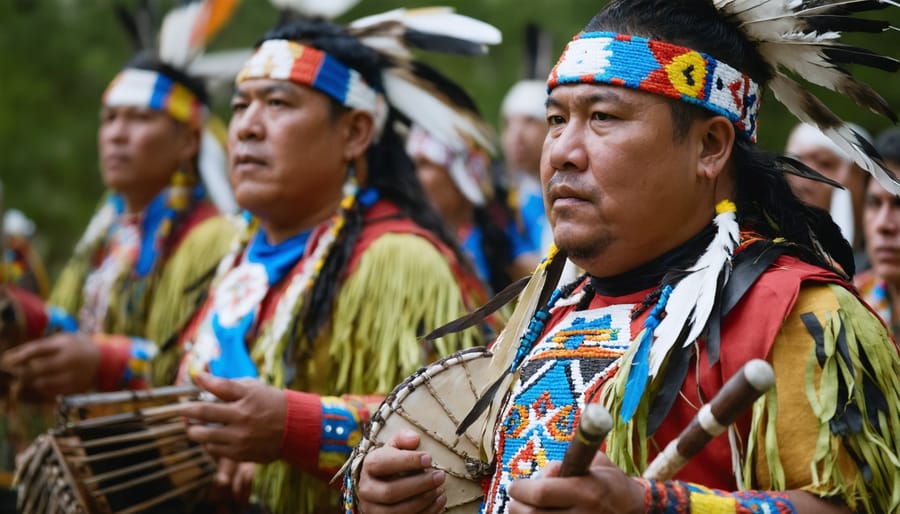
Annual Festivals and Gatherings
Throughout the year, Ontario comes alive with vibrant celebrations where traditional indigenous music takes center stage. Summer brings the largest gatherings, starting with National Indigenous Peoples Day on June 21st, when communities across the province host pow wows featuring drumming circles and traditional songs.
The Summer Solstice Indigenous Festival in Ottawa (late June) offers three days of musical performances, while the Grand River Champion of Champions Pow Wow in Six Nations (July) showcases some of the most accomplished indigenous musicians and dancers in North America.
August welcomes the Three Fires Homecoming Pow Wow and Traditional Gathering at Wasauksing First Nation, where visitors can experience sacred songs and the powerful rhythms of traditional drum groups. The Wikwemikong Annual Cultural Festival on Manitoulin Island, held during the same month, is one of the largest and longest-running traditional pow wows in Eastern Canada.
In autumn, the First Nations Fall Festival at Crawford Lake Conservation Area combines musical performances with harvest celebrations. Winter brings unique indoor gatherings like the Indigenous Music Series at the Royal Conservatory in Toronto, while spring features the Spring Awakening Festival, celebrating traditional songs that welcome the new season.
Remember to check event dates in advance, as they may vary yearly, and always follow community protocols when attending these sacred gatherings. Many festivals welcome respectful visitors and offer traditional teachings alongside musical performances.
Respectful Appreciation
When experiencing indigenous music performances, it’s essential to approach these cultural expressions with respect and mindfulness. Always follow the guidance of indigenous hosts and performers regarding photography, recording, or participation. Some ceremonies and songs may be sacred, and recording might not be permitted.
Show appreciation through active listening and learning. Take time to understand how traditional environmental knowledge and storytelling are woven into the music. Feel free to ask questions during appropriate times, such as designated Q&A sessions, but avoid interrupting performances.
If you’re invited to participate in drum circles or singing, follow the lead of indigenous teachers. Remember that many songs carry deep spiritual and cultural significance. Wear appropriate attire and remove hats during ceremonial performances unless otherwise instructed.
Support indigenous musicians by purchasing authentic recordings and crafts from authorized vendors. Consider making donations to cultural centers that preserve and teach these musical traditions. Share your experiences respectfully with others, helping to promote understanding and appreciation of indigenous musical heritage.
Traditional indigenous music remains a vital thread in Ontario’s cultural tapestry, connecting us to ancient wisdom and timeless stories. By supporting indigenous artists, attending authentic performances, and approaching these traditions with respect and openness, we can help ensure these precious musical practices continue to thrive for generations to come. Whether you’re hiking through Algonquin Park or visiting a cultural center, take time to listen, learn, and appreciate the rhythms that have echoed across these lands for thousands of years. Each drum beat, each song, and each musical gathering helps preserve and celebrate the rich heritage that makes Ontario’s indigenous cultures so uniquely beautiful. Let’s all play our part in keeping these traditions alive while creating meaningful connections with the original stewards of this land.

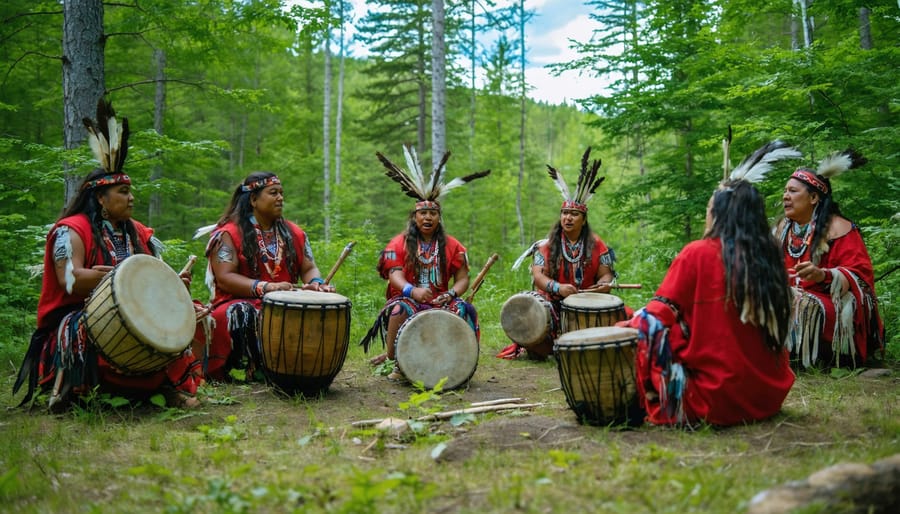

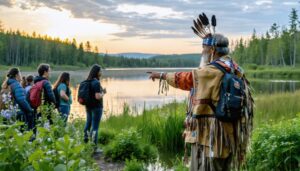
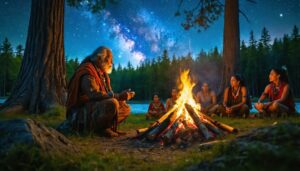


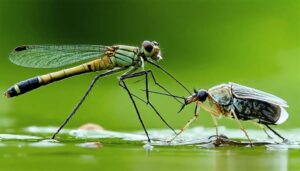


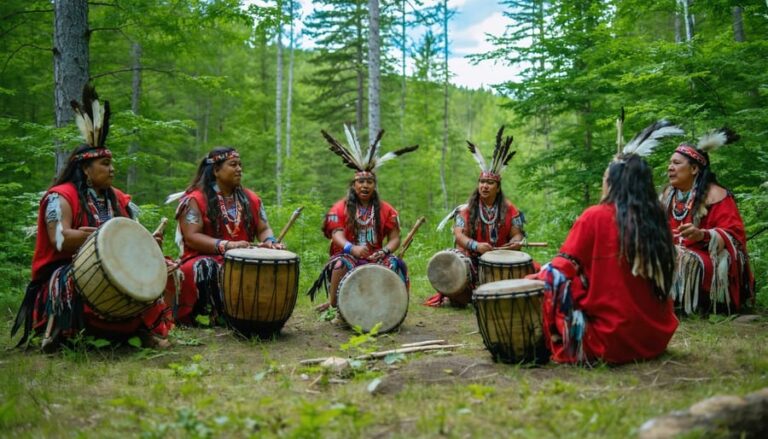
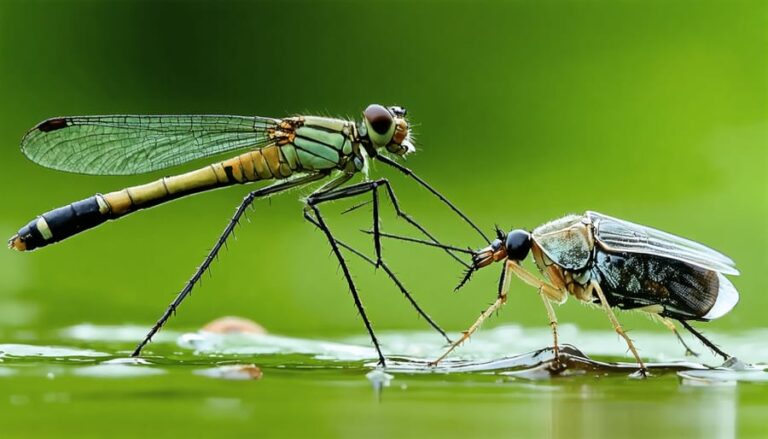


+ There are no comments
Add yours